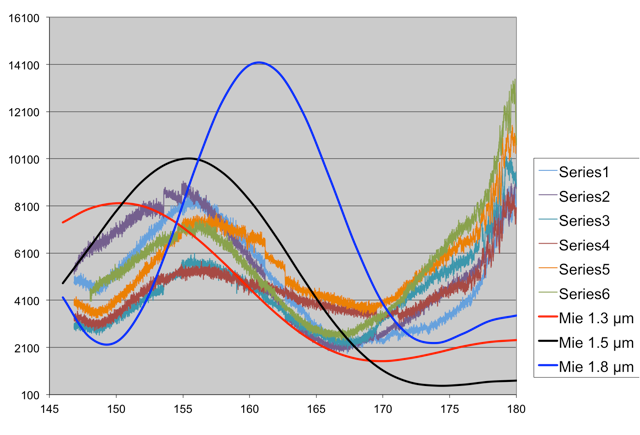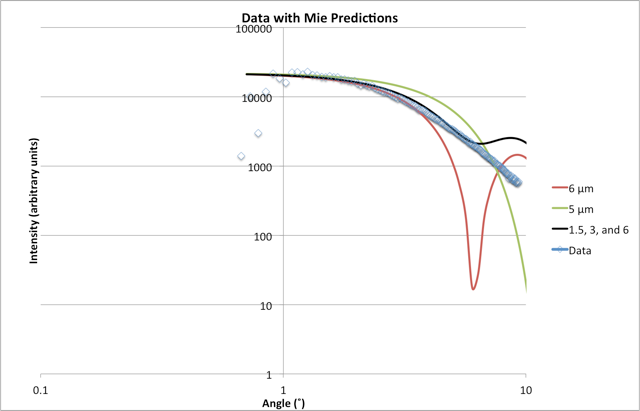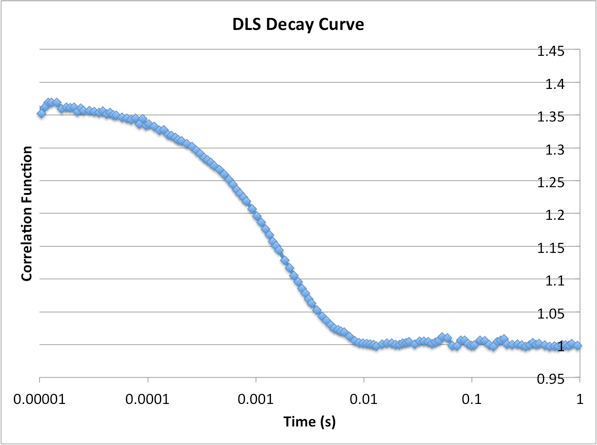Research Project
My project is to design and calibrate an apparatus capable of investigating how light scatters from soot (a fractal aggregate). Soot is a black powdery substance formed by many different types of combustion, and as such is a concern to climatologists who study how particles in the atmosphere affect earth's global climate. Soot is an aggregation of many carbon particles, which bind together randomly. This randomness gives rise to the fractal aspect; the idea that the structure of the soot looks the same no matter what scale you view it from (within reason).
Goal
The goal of this project is to set up a device to be able to better understand how soot in the atmosphere effects global climate change. As of right now, aerosols like soot are the least understood factor in climate modeling and so impose limits on the certainty of predictions. By studying how soot scatters light backwards, we can get a better picture of what the future holds in store for humanity.
Basic Theory
Calibrations rely on being able to reproduce and measure known phenomenon with enough accuracy to have confidence in quantifying the unexplored. To do this, I scattered from spherical particles, because spheres are well understood. In fact, how light scatters from spheres of arbitrary size and refractive index has a definitive description, known as the Mie solution. Using Mie curves calculated by a computer is an important aspect of my work, as an unfavorable comparison of experimental data with these curves usually means something is amiss.
An important parameter in light scattering is q, sometimes called the momentum transfer, which is equal to 4*pi*sin(theta/2) all over wavelength. Dr. Sorensen has found patterns many have missed by plotting intensity vs. qR rather than theta.
Particles that have a diameter bigger than the wavelength of light exhibit what is known as "enhanced forward scattering" where they scatter light the most strongly in the forward direction. This is called the frontal lobe. This frontal lobe contains information on the size of a particle, as discussed below.
Calibrations
I started by forward scattering from 9.8 micron spheres and looking for ways to experimentally verify their size. Unfortunately, initial efforts to find so called Mie ripples resulted in failure, perhaps due to too large of a size distribution in the particles. However, I was able to obtain data for the frontal scattering lobe drop-off, an area in the Guinier regime that can be used to quickly determine the size of the particle using the 1/q~r relationship.
Backscatter
After that I was able to move to the backward direction and now scattered from a water vapor aerosol made from a household humidifier. I collected consistent data over 35 degrees, but they did not match both the intensity and ripples predicted by the Mie calculator.

A contributor to this disparity is almost certainly polydispersity, however a more interesting and informative explanation may lie in what's called the Opposition Effect, Opposition Surge, or retroflectance. Notice that the biggest difference between experiment and theory is the large intensity at near 180 degrees. This is consistent with the opposition effect, although I'm currently in the process of verifying this as the primary candidate.
Forward Scattering
Before finding out about opposition effects from the literature on backscattering, I was at a loss to explain the discrepancy, and so turned back to forward scattering to hopefully gain a better idea of the size of the water droplet aerosol. The data suggested a size that was much too big to also match the ripples in the backward direction, leading me to believe the aerosol was polydisperse in a big way. More evidence for polydispersity can be found in the fact that a droplet of diameter 6 microns matches the Guinier regime but has ripples that don't show in the data. If there are many sized particles, these ripples would cancel each other out leaving a smooth line like that seen in the data.

At this point, it's important to note that larger particles tend to dominate scattering in the forward direction. In fact, scattered intensity near zero degrees is dependant on the radius to the fourth power. This means that if a sample is polydisperse, a size measurement in the forward direction will usually only attain a size for the biggest particles. With this in mind, it makes sense that a forward scattering measurement would suggest a size much bigger than found in the back direction and again speaks volumes about the dispersity of the aerosol.
Dynamic Light Scattering
With two different measurements of the size we decided to try to use dynamic light scattering to perhaps settle the matter and further probe the size(s) of the droplets from the aerosol generator. When laser light is incident a on sample, the sample creates laser speckle. By measuring how these speckles change with time we can find a time constant, the correlation time, which relates to how the particles are diffusing through a medium. This diffusion depends on the size of the particle, and so by measuring the correlation time and knowing other aspects of the system, such as the viscosity of the medium, we can find the radius.

This plot show the correlation function vs. time. By finding the inverse of the slope of the natural logarithm of the correlation function we get the correlation time discussed above. For the best of these runs, we generally found a size of about 2.5 to 4 microns. This falls between the two sizes found from the other types of scattering.
The Future
I will continue to work through the next year on making these types of measurements more accurately and with new aerosol sources while studying the literature on opposition effects and backscattering in general.
